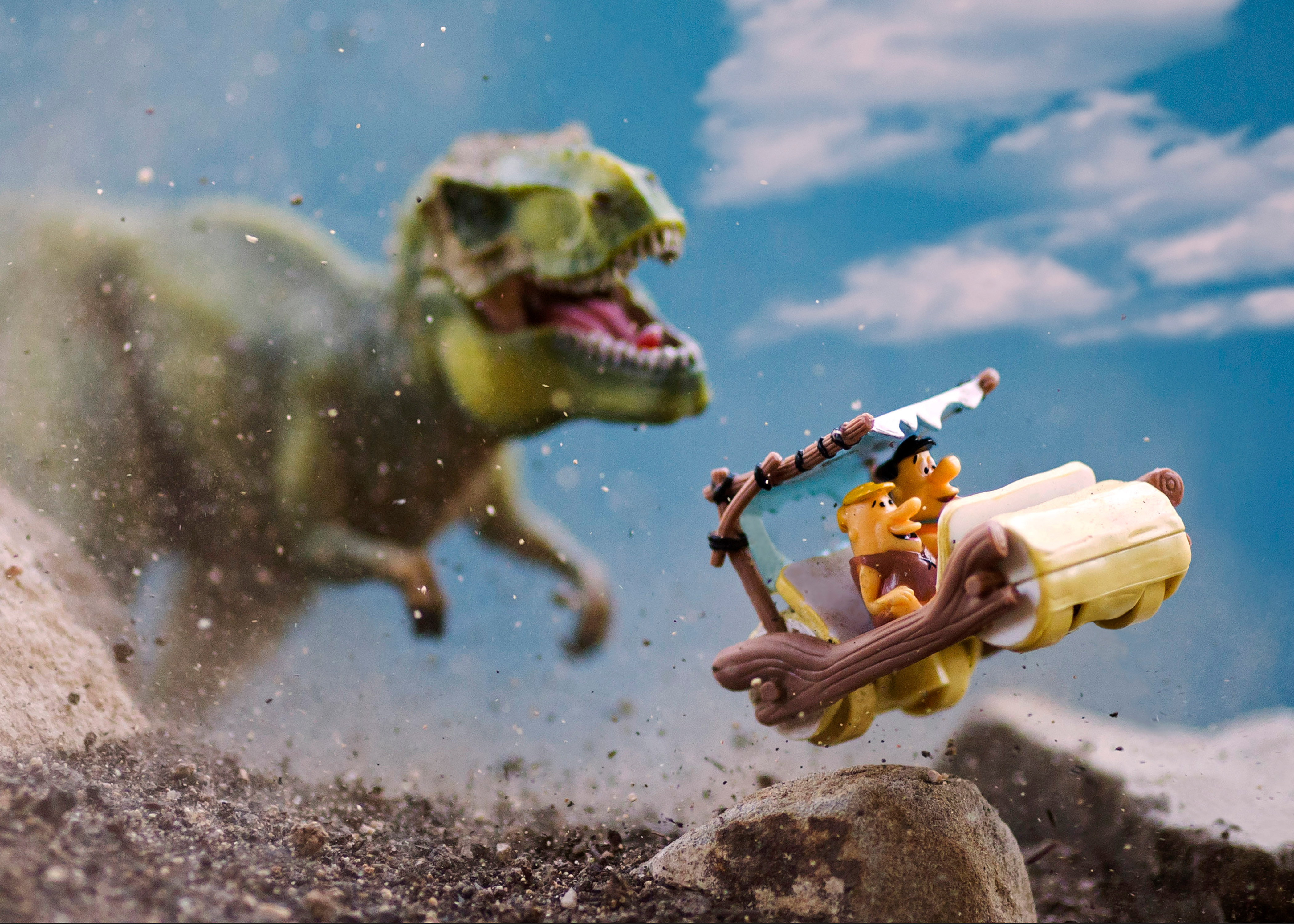Last Updated on 08/16/2020 by Dan Ginn
This is some of the best toy photography we’ve seen.
“I confess to having an offbeat sense of humor, and that will often come out in my work,” says photographer Mitchel Wu. If you had never met Mitchel but had only seen his work, you would know immediately that he’s a funny man. And the amount of humor in his toy photography is equaled by an insane amount of skill and talent. His client list is strong enough to make the most well-rounded photographer envious. And his job as a whole, although complex, looks like a hell of a lot of fun – we had just as much fun learning all about it!
“I discovered toy photography at almost exactly the same time that I was shooting my last wedding and was immediately drawn to the storytelling, nostalgia, and pop culture aspects of it – it was an art form that encouraged (demanded!) storytelling and creativity.”
–Mitchel Wu
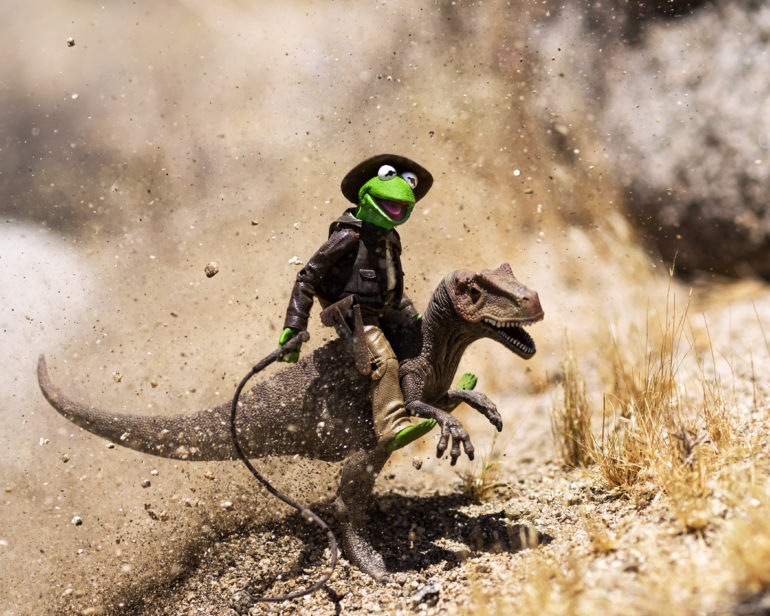
Mitchel Wu’s Essential Gear For Toy Photography
- Canon 5D Mark III
- Canon 135mm f2L
- Canon 24-70 2.8L II
- Canon 50mm f1.2L
- Canon 35mm f1.4L
- Platypod Tripod
- Wacom Intuos Pro
- LitraTorch 2.0
- LitraPro
- LitraStudio.
We asked Wu to go into further detail about his set up:
“I shoot with the Canon 5D Mark III and the Canon 135mm f2L for 95% of my shots – I’ve had both since my wedding photography days. I love the 135mm – it’s very light and is one of the sharpest lenses in my kit. It also allows me to shoot from 5′ or more away from my setups, which keeps my gear a safe distance from all the dirt, debris and muck being tossed around, and safe from the fireworks explosions and liquid splashes I often create. If I’m shooting in a tighter space I use either my Canon 24-70 2.8L II, my 50mm f1.2L, or 35mm f1.4L.”
“The gear that I added to meet the unique demands of toy photography were my tripods and lighting. If I’m shooting a scene at an elevated position, like on a table, one of my trusty Manfrotto tripods will do. But if I’m shooting at ground level, or in a very confined space, I will reach for my Platypod Tripod – the perfect solution for shooting at ground level, or any place a conventional tripod isn’t feasible or allowed. With toy photography, you want to shoot at the toy’s level as much as possible since this encourages the viewer to enter the world you’ve created for them. Although some full-size tripods can convert to ground level shooting, I’ve found them to be a very cumbersome, space-limited solution. And with the smaller mini tripods, and small flexible tripods, I always experienced camera creep, which would wreak havoc on the razor-thin focal plane I often work at. Full disclosure, I’ve partnered with several different gear companies over the years that have proved invaluable to my process, one of which is Platypod.”
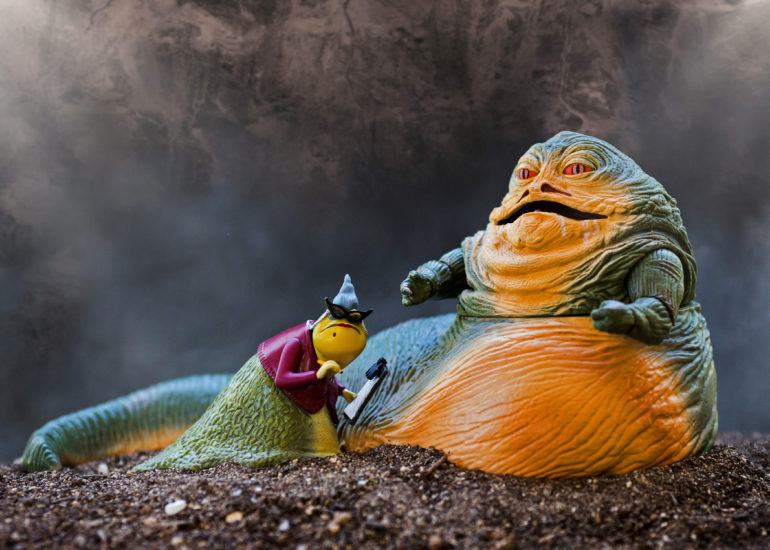
“Like every other genre of photography, lighting is one of the most important technical factors to image-making. I have a lot of speedlights, light diffusers, and modifiers leftover from my wedding photography days but quickly realized they’re overkill for toys ranging from about an inch tall to roughly 7″ tall. Continuous lighting from powerful, smaller lights has proven to be a much better option. I use the full range of Litra lights (also a partner of mine) – the LitraTorch 2.0, LitraPro, and LitraStudio. They feature brightness and color temperature control, Bluetooth connectivity which allows setting adjustments via your smartphone, and waterproofing – all features I’ve utilized. Accessories include color gels, diffusers, and barn doors. These lights have enabled me to push my creativity to new levels”.
“For editing, I use a Wacom Intuos Pro tablet and pen tool, which was an absolute game-changer. Using a pen tool is infinitely more natural and intuitive than using a mouse.”
“And then simple but critically important things, like my wireless infrared remote shutter release, which allows me to create practical effects at the setup while firing the camera simultaneously. I also use a lot of compressed air to stir up dirt and debris, and Atmosphere Aerosol (fog in a can) to create smoke, cloud and fog effects.”
Phoblographer: Hey Mitchel! You have certainly found your niche – how did you fall into the world of toy photography?
MW: I have a degree in illustration and in a previous life designed and developed products for companies like The Walt Disney Company, Warner Bros, LucasFilm, and Cirque Du Soleil. What I learned during those years was invaluable, as it gave me insight into the cultures of these companies and how they work with creatives.
I’ve always enjoyed photography and in 2007, after experiencing some challenges and loss, decided to pursue a full time career in photography. It’s such a cliche, but I learned firsthand that life really is short, and I refused to waste a minute more of mine doing things I didn’t particularly care about. In short, I craved more creativity in my life and less BS, if that makes sense. I focused initially on commercial and corporate photography as well as lifestyle photography. Wedding photography eventually became a large part of my business and over the course of several years I photographed hundreds of them.
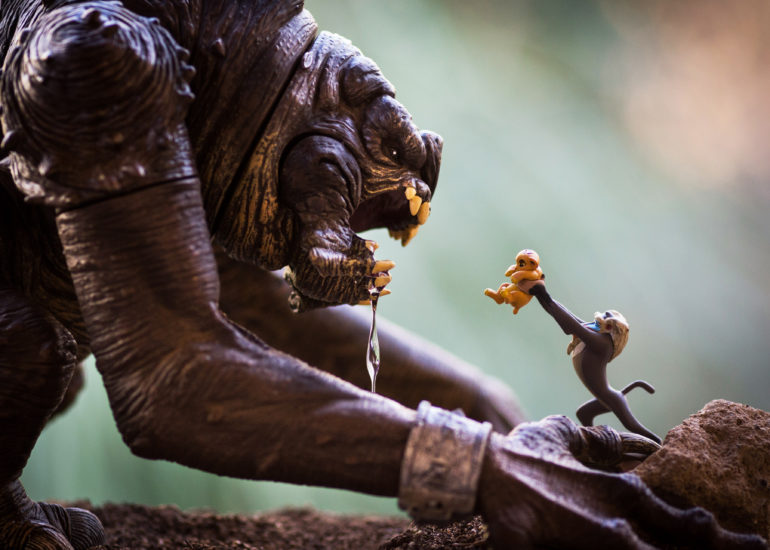
But it was in 2015, when my daughter started high school, that I realized I had a limited number of weekends left to spend with her before she moved away to college (which she did in 2019). Photographing weddings took many of those weekends away and I knew I would need to find a new direction.
I discovered toy photography at almost exactly the same time that I was shooting my last wedding and was immediately drawn to the storytelling, nostalgia, and pop culture aspects of it – it was an art form that encouraged (demanded!) storytelling and creativity. I also quickly recognized the potential to make toy photography a career.
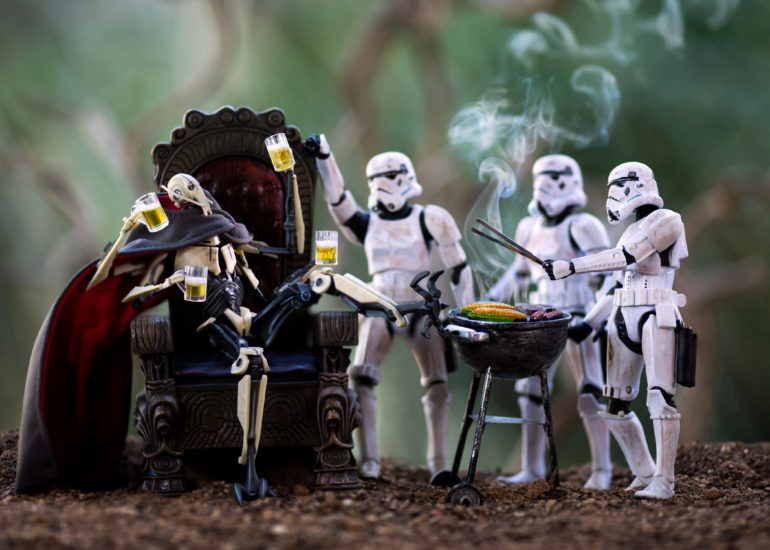
I’ll admit that it was an extremely risky and unconventional choice, but the level of creativity one is able to achieve through toy photography is irresistible and undeniable. It was, and still is, ridiculously niche, but that was hugely appealing to me having come from shooting weddings, one of the most competitive, oversaturated genres of photography. Having transitioned from wedding photography to toy photography, I like to say that I went from shooting Bridezilla to shooting Godzilla.
Phoblographer: Your work is next level. How do you come up with the narratives for your frames in order to bring the toys “to life”?
MW: Appreciate that! First and foremost, what really drew me to toy photography was the potential to tell incredible stories. As with most visual arts, I feel a story is needed to make an image impactful and memorable. Although ideas and stories can come from almost anywhere, there are a few themes I’ll often visit during the ideation and story development process to see if it triggers a creative spark.
One of those themes is showing well-known characters in unexpected ways. Most of the toys I photograph come from comics, movies, children’s books and television shows. Everything we know about these characters has been force fed to us by their creators and writers. That leaves a lot of fertile ground to create unexpected stories and content around. A good example of this is my image of Star Wars’ General Grievous enjoying some beers and a BBQ with some stormtroopers. Which hopefully raises the question among viewers, what do villains do in their downtime? Are they really villainous and evil every waking moment of the day? Another theme I might mine for ideas is strange, unexpected character connections between seemingly unconnected characters. Like how Roz from Monsters Inc bears an uncanny resemblance to Jabba the Hutt. But really, anything and everything is fair game.
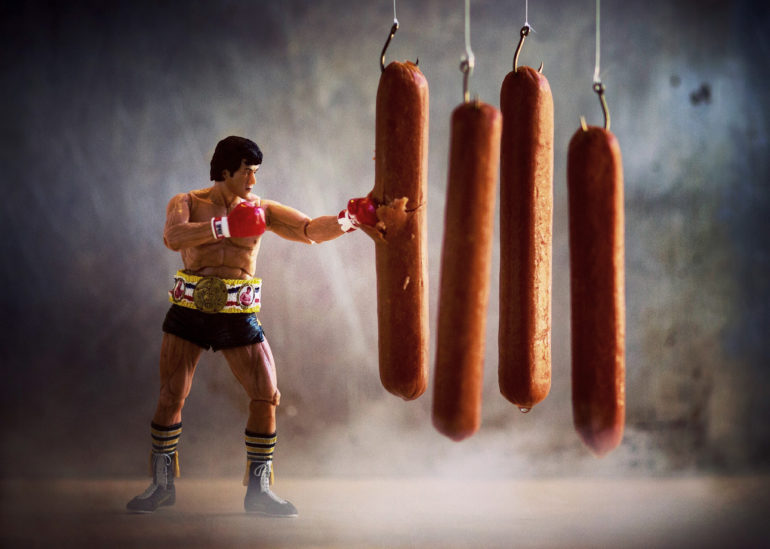
Phoblographer: You have worked with The Walt Disney Company, Warner Bros, as two examples. How did you get in the door with them?
MW: I can’t say for sure because they reached out to me. But I am constantly trying to put myself out there and am pretty sure that’s what led to their discovering me and my work, either directly or indirectly. I maintain an engaged presence on social and digital media, but at the same time target traditional media as well – magazines, newspapers and television. I’ve had a great deal of newspaper coverage in the UK, and uncoincidentally, I think, the UK has become the source of quite a bit of work for me. I think the cumulative result of all of the above is visibility in a time and environment where extreme saturation makes it very difficult to be seen, and that invariably leads to opportunities.
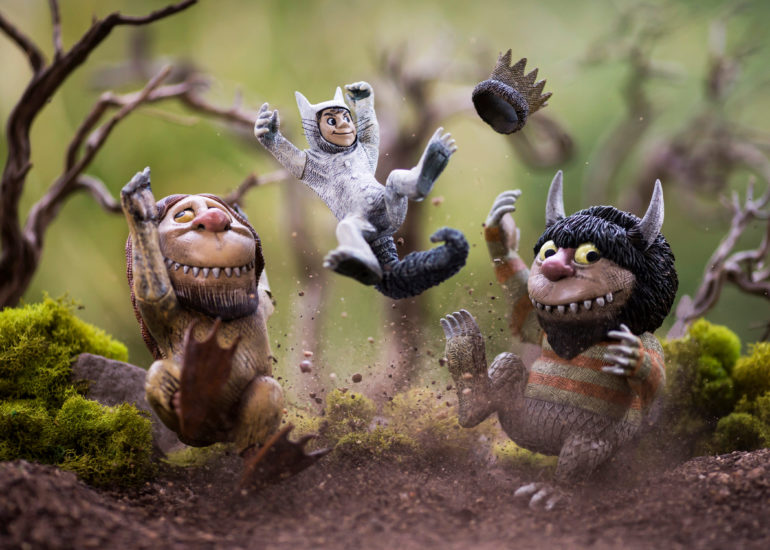
Phoblographer: How long did it take to find your voice in this niche? What was the process of discovery like?
MW: It’s been an incredible journey that continues to this day. When I first started photographing toys I shot what I saw a lot of other toy photographers shooting – Star Wars action figures. And that was fine, as it allowed me to begin to develop and define my visual style, hone my storytelling and learn some of the techniques unique to this art form. But I soon realized that, while I liked Star Wars, I didn’t feel a strong emotional connection to the property like I did with some others. And while creating action shots for action’s sake was fun, I really began to find my voice when I started telling stories through satire, sarcasm and irony – all facets of my own personality. I think that recognizing these facets, and embracing them, contributed to how I developed as an artist and how viewers and clients perceived me.
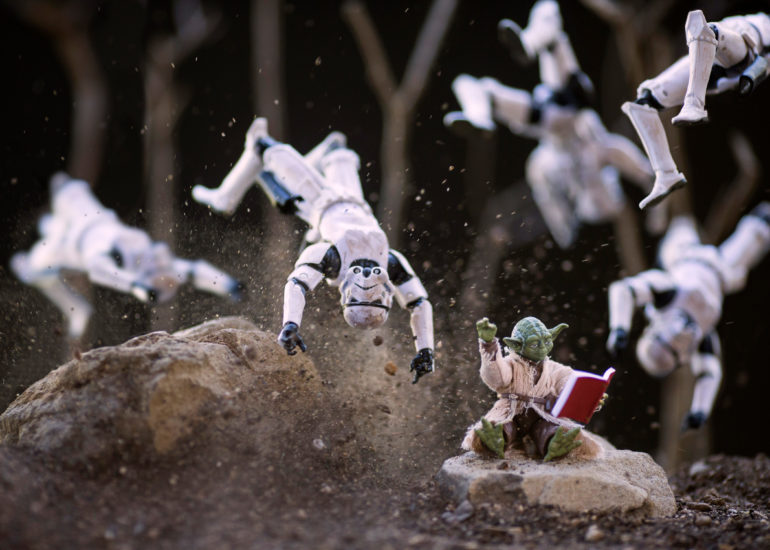
My work is driven largely by the movies, books, and toys of my youth, as well as those of my daughter’s youth. In other words, nostalgia is a large component of my work. I’ve photographed a lot of Toy Story, which is directly related to having watched the movies dozens of times with my daughter when she was growing up. The same can be said for images inspired by the children’s book, Where The Wild Things Are. That was one of my daughter’s favorite bedtime stories, and I read it to her dozens of times as well. I eventually circled back to Star Wars, after I learned the difference humor made to my stories. I think that creating from a very personal place comes through in the work.
Phoblographer: We’ve heard of high maintenance models, but what has been the most high maintenance toy to work with?
MW: The highest maintenance, most difficult toys to work with are the ones that won’t bend to my will because they are inflexible (a little articulation humor). I also detest working with needy toys that refuse to stand on their own two feet.
“I subscribe to the philosophy of doing whatever enables you to arrive at the strongest image possible.”
–Mitchel Wu
Phoblographer: Are you an introvert or an extrovert? How does that transmute your work?
MW: I’m an extroverted introvert. My nature is to be introverted, but I know that being introverted actually does me very little favors, so I have to find a way to move past that if I want to continue to put myself out there and grow. This past February I was invited to speak about my journey to a large group of toy industry professionals at Toy Fair New York, one of the largest toy industry conventions in the world. If I allowed my introverted self to have its way I would have said no to the invitation. But I said yes, and going to Toy Fair New York ended up being one of the most amazing experiences of my personal and professional life, one that has led to some incredible opportunities and collaborations.
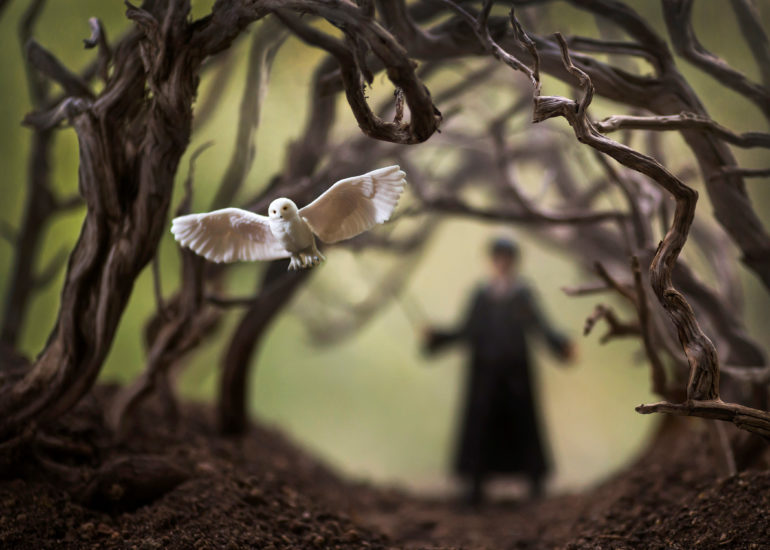
Phoblographer: How long is your editing process? What helps you get – and stay – in the zone to produce your work?
MW: The editing process can take from a couple of hours to a couple of days, depending on the complexity of the image. The average is probably closer to four to six hours. I use Lightroom and Photoshop, but Photoshop is generally used to remove elements, not add them. Although there are different camps when it comes to Photoshop, and practical vs digital effects, I subscribe to the philosophy of doing whatever enables you to arrive at the strongest image possible.
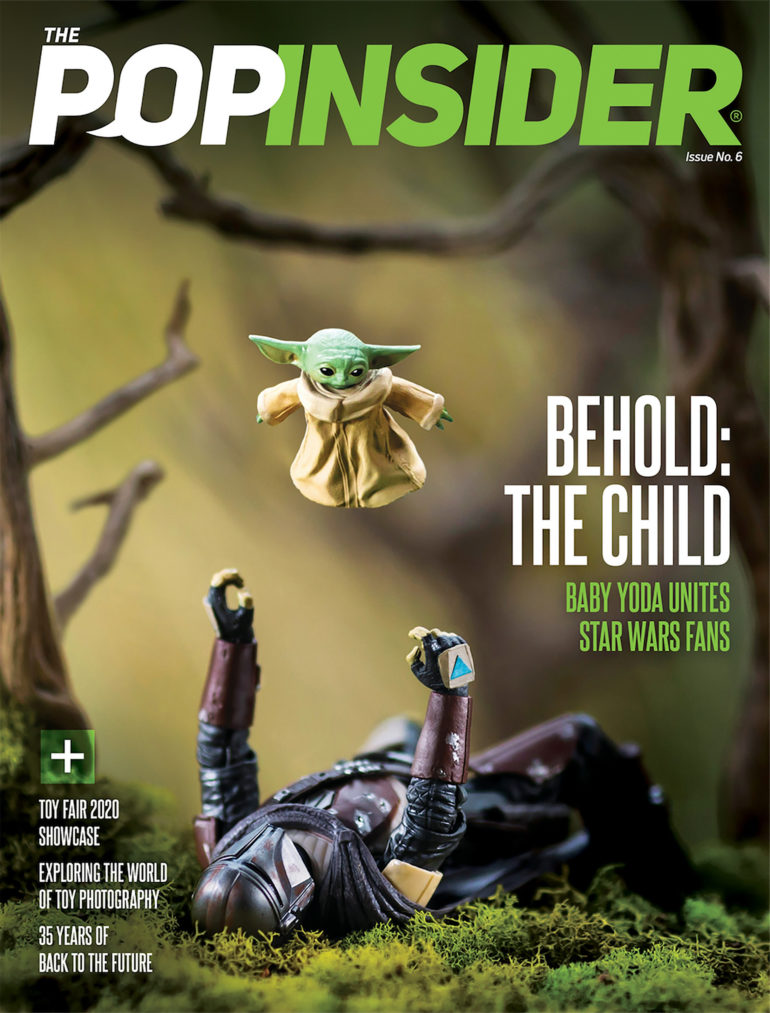
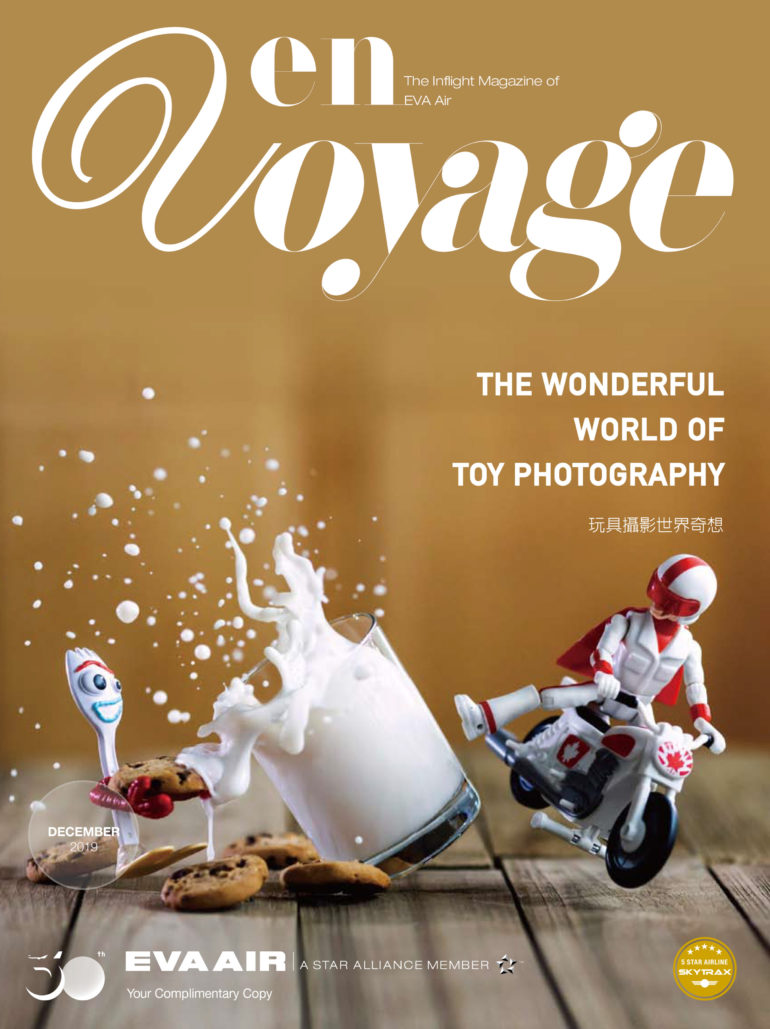
To help myself stay motivated and creative I like doing a refresh from time to time with the source materials I mentioned earlier – comics, movies, books, etc. And I’ll add museums and galleries to that list. And if I experience creative block, and who doesn’t, I won’t hesitate to switch up my gear a little, try some new effects, and even take a break from storytelling – just experiment with different looks and visuals. Sometimes I’ll take off the 135mm lens and throw on the 50mm and start shooting things, handheld, at f1.2 – really experimenting with different depths of field, angles and perspectives in the process. Or I’ll use my iPhone (pre-portrait mode) to give myself some limitations and shoot at a very deep depth of field. The results of these visual diversions usually end up on my Instagram page, and much of what I learn through these eventually make their way into my client work in one form or another.
Phoblographer: What brief would you need to get for it to be your “dream gig?”
MW: My dream gig is any project that allows me the freedom to execute my creative vision, with a minimum of direction and oversight. I’m grateful that most of my commissions over the past year have allowed me to do just that, which I think is a result of the increasing name recognition I have in the industry, and increased visibility I can bring to a project. That’s not to say that there aren’t expectations and approvals needed along the way, because there are, but those are things that I’m very comfortable with.
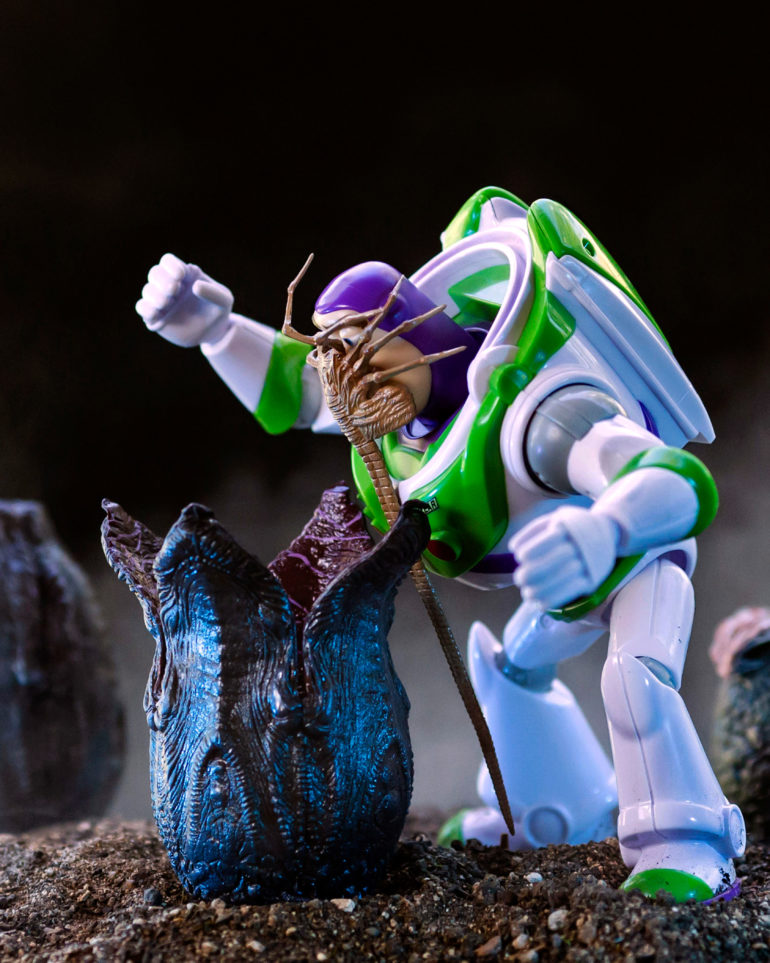
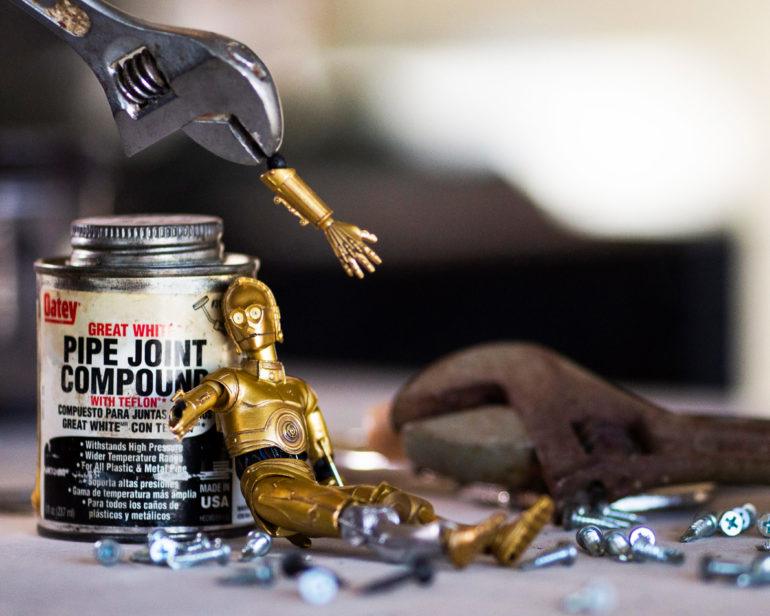
Phoblographer: Do you design and build the sets yourself? Please tell us more about that process.
MW: It really depends on the characters I’m photographing and the stories I’m telling. Sometimes it’s more about finding the right location, and fine tuning it to fit the story. This is more likely the case when shooting Toy Story characters or Ant-Man. Since they are supposed to be diminutive characters in a human-sized world they work perfectly in the home environment, amid household items. But for most other characters I’m doing some sort of environment building. Because of the small size of the figures, rocks easily become boulders, branches become trees, and puddles become oceans. My two most used locations are my porch railing and my stone patio in the backyard. And occasionally a seasonal patch of moss that only exists during wet winter months.
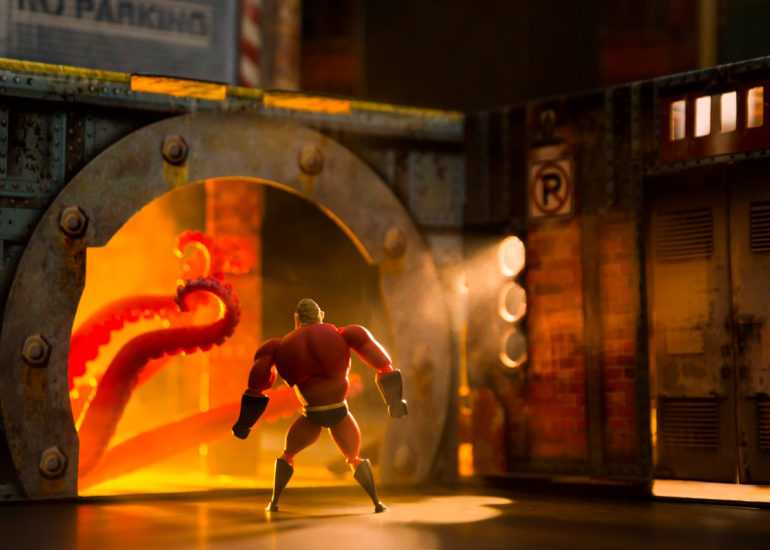
Phoblographer: You have said yourself: toy photography isn’t something a lot of people are aware of. Despite creating exceptional work, do you ever feel you have had to fight to be taken seriously in a field that priorities other genres?
MW: Great question, and one I’ve never been asked before. I think the fact that most people aren’t familiar with toy photography is what has created so many interesting opportunities. There is still a lot of impact to be made, and the media recognizes that. This fall I will be featured in an antholgical documentary series on Marvel, titled Marvel 616, which will stream on the Disney+ network. I attribute that to toy photography still being relatively fresh and unknown, yet having the ability to enthrall and entertain viewers from the moment they see it. I’ve never had to fight to be taken seriously, nor have I ever felt the need to. This is toy photography, and toys are meant to be fun, not serious. And although ‘photography’ is clearly a critical component to ‘toy photography,’ I feel like it lives independent of what most people consider traditional photography. Toy photography is a strange concoction of lowbrow photography, product photography and fine art photography. It is rooted firmly in pop culture and has the ability to create an immediate and strong emotional impact on viewers.
Toy photography isn’t as much about documenting a moment in time as it is creating that moment in time, through story, motion, and emotion.
Phoblographer: Have you been impacted because of the events of 2020? How is work for you right now?
MW: Like everyone else we’ve had to adjust our lives to the challenges caused by the pandemic. Thankfully the digitization of communications and business have allowed many, including creatives, to continue working. I’ve been fortunate in that my models (figuratively and literally) tend to be around 6″ tall and made of plastic. No social distancing required from these coworkers. I create my images either inside my home or somewhere outside on my property, so sheltering at home hasn’t affected me in that respect. The amount of work has been about the same, if not a bit more, than before the pandemic began. I’m very grateful for that.
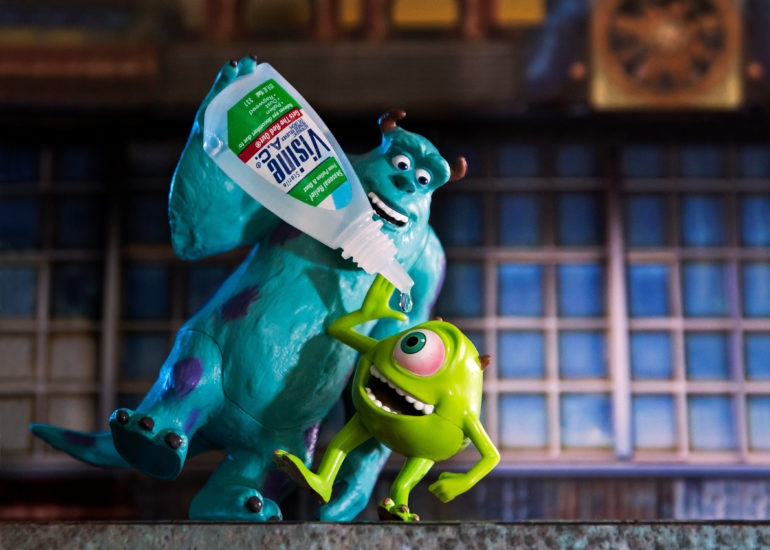
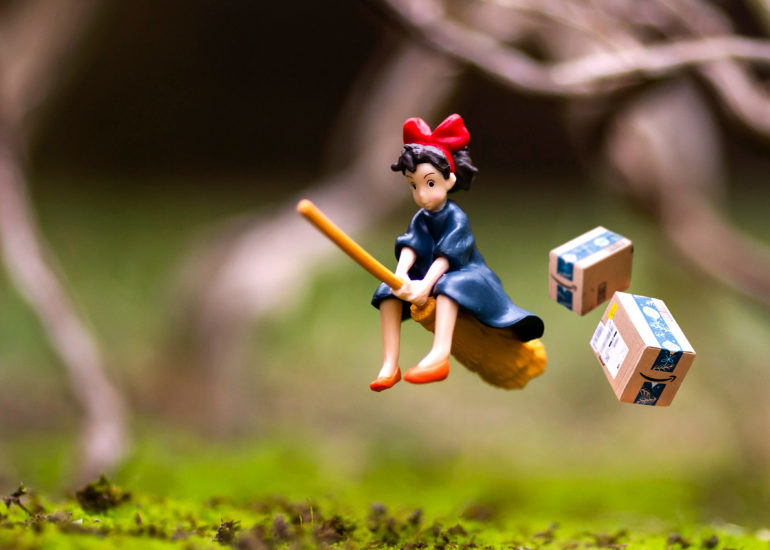
Phoblographer: I imagine your work has evolved over the years. What does the next level look like for your toy photography?
MW: Beyond continuing to push myself creatively, I’d like to begin exploring exhibition opportunities, which until now has been more happenstance. I was thrilled to participate in the Play>Create! group show in Shanghai in 2018, followed by The Toy Exhibition group show at the Pacific Fine Arts Center in Virginia in 2019, and most recently a 70 image solo exhibition at Toy Fair New York this past February. And in 2021 I’m looking forward to Toy Stories – The Toy Photography Of Mitchel Wu, a solo exhibition at the historic Riverside Museum of Art.
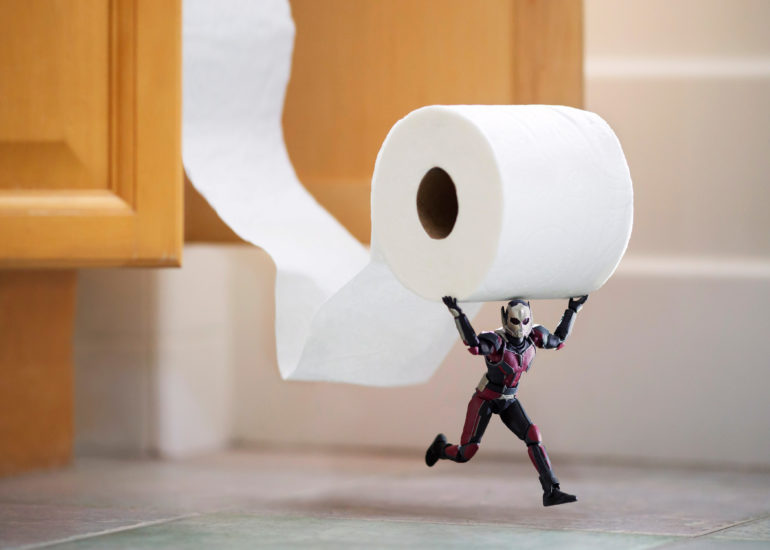
To get an even better understanding of Wu’s creative process, we invite you to enjoy this one minute video, which was shot as a short documentary for 60secdocs.
You can connect with Mitchel by visiting his website, Facebook, and Instagram.
All images by Mitchel Wu. Used with permission.


